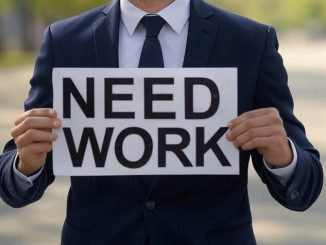The summer teen employment surge is largely a consequence of seasonality in supply, not demand. To see this, note that a pure summer demand surge would draw teens into the labor market with low teen summer unemployment, high summer real wages, and low summer unemployment among persons not enrolled in school during the academic year. The hypothetical demand surge would also have to be quite large – about as large as doubling the size of the nation’s military in a mere two months – because the end result is about a million new jobs for teens.
In fact, teen unemployment spikes in June as the labor market absorbs more than one million teens. Unemployment of persons aged 25 and older (not shown in the figures) is high throughout the summer, peaking in July at almost 700,000 persons above trend. Median nominal and real weekly wages for teens are often at their lowest of the year in the third quarter (July – September), and presumably hourly wages are even lower due to longer teen summer work weeks. These patterns reverse when the academic year ends.
Also consistent with the supply interpretation, Mulligan (2010b) shows how age groups with the largest summer log employment and log unemployment spikes are those with the greatest school enrollment rates during the academic year, and the summer log employment spike may even be negative for groups with near zero school enrollment.
Nor do many of the summer jobs for teens appear to be in industries that have a significant spike in labor demand, because 77% of those jobs are in industries that expand their employment of persons aged 25-34 less than two percent, if at all. Based on calculations from the May, July, and September 2005 Current Population survey, the top industry hiring teens in the summer was “arts, entertainment, and recreation” (accounting for 19 percent of the teen summer jobs), which had no change in the number of persons aged 25-34 employed. The second industry (also accounting for 19 percent) is “accommodation and food services,” which actually cut its employment of persons aged 25-34 by 4 percent during the summer.
These are all indicators of supply shifts during the summer that are large, and exceed the demand shifts.
- Bulenox: Get 45% to 91% OFF ... Use Discount Code: UNO
- Risk Our Money Not Yours | Get 50% to 90% OFF ... Use Discount Code: MMBVBKSM
Disclaimer: This page contains affiliate links. If you choose to make a purchase after clicking a link, we may receive a commission at no additional cost to you. Thank you for your support!




Leave a Reply